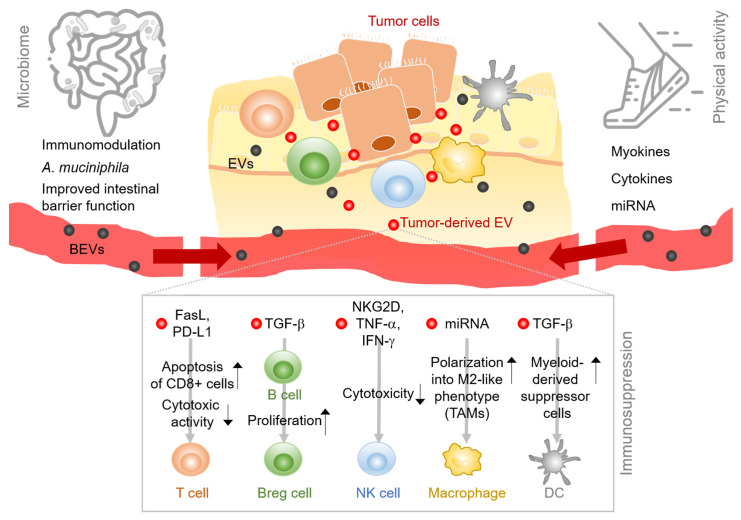Figure 1.
Extracellular vesicles (EVs) expand the tumor–immune interactions. In the local tumor microenvironment, EVs mediate intercellular communication between immune cells and tumor cells. Tumor-derived EVs suppress immune cell functions via several mediators and mechanisms. EVs derived from remote sources have the potential to shape the tumor–immune interactions in the tumor microenvironment directly or indirectly by either bacterial EVs (BEVs), derived from the host microbiome (left side) or by factors released during physical activity (right). Abbreviations: BEVs, bacterial extracellular vesicles; EVs, extracellular vesicles; FasL, fas ligand; PD-L1, programmed death-ligand 1; TGF-β, transforming growth factor beta; Breg cell, regulatory B cell; NKG2D, natural killer group 2D; TNF-α, tumor necrosis factor alpha; IFN-γ, interferon gamma; NK cell, natural killer cell; TAM, tumor-associated macrophage; DC, dendritic cell.

